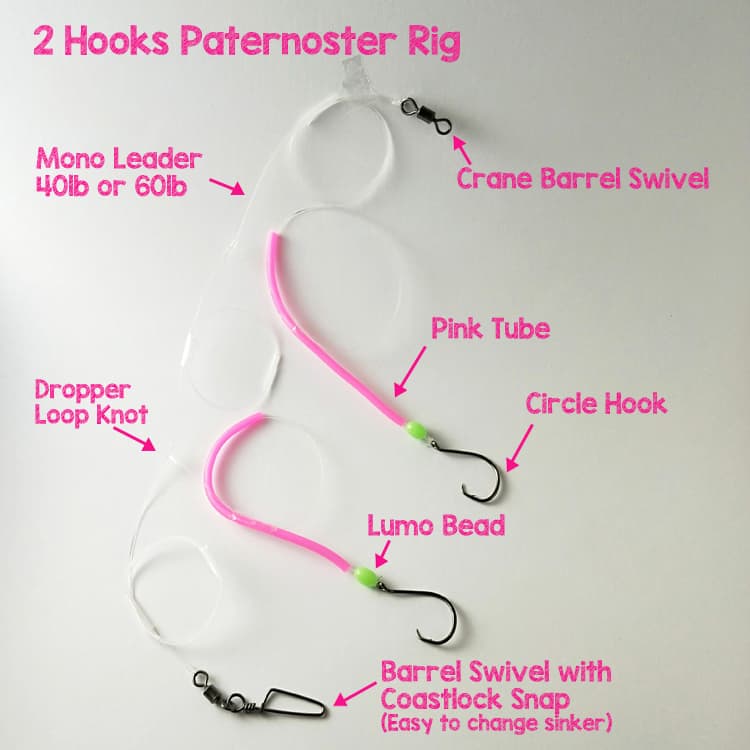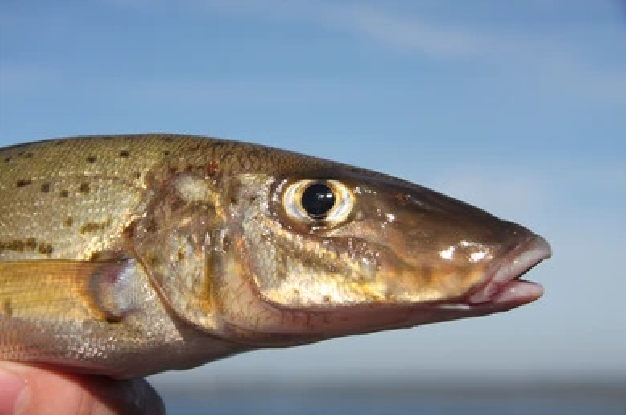The paternoster rig is a popular and versatile rig used by anglers all over the world, particularly in areas with a strong current or when targeting bottom-dwelling fish. Here are some key points about this rig:
- Multiple hooks: One of the main features of a paternoster rig is that it allows for the use of multiple hooks. This means you can present multiple baits at different depths, increasing your chances of catching fish.
- Dropper or branch lines: These are lines that are attached to the main line at regular intervals, with each line having a hook and bait. The dropper or branch lines are usually shorter than the main line, which means that the bait is presented at different depths in the water.
- Sinker: A sinker is attached to the bottom of the rig to keep it stable in the water. The weight of the sinker will depend on the depth and strength of the current, as well as the weight of the bait and the size of the hooks.
- Swivel: A swivel is usually attached to the main line to prevent the line from twisting or tangling. This is particularly important when fishing in areas with a strong current.
- Bait: The type of bait used will depend on the species of fish being targeted. Popular baits for the paternoster rig include squid, pilchards, and prawns.
- Setup: To set up a paternoster rig, tie a swivel to the main line and attach a length of leader line to the other end of the swivel. Tie dropper or branch lines at regular intervals along the leader line, each with a hook and bait attached. Attach a sinker to the bottom of the rig.
Overall, the paternoster rig is a great choice for fishing in areas with a strong current or when targeting bottom-dwelling fish. With multiple hooks and baits presented at different depths, it’s a highly effective rig for catching a variety of fish species.

How to tie a Paternoster Rig?
Here are the steps to tie a paternoster rig:
- Take a length of leader line and tie a swivel to one end using a strong knot such as a uni knot or a palomar knot.
- Cut two or more dropper lines or branch lines, each around 30-50cm in length, and tie one end of each to the leader line at regular intervals using a dropper loop knot. The dropper loop knot creates a loop in the line, which allows you to tie the hook onto the dropper line.
- Tie a hook onto each dropper line using a knot such as the improved clinch knot or the snell knot.
- Attach a sinker to the bottom of the rig. The weight of the sinker will depend on the depth and strength of the current, as well as the weight of the bait and the size of the hooks.
- Bait the hooks with your chosen bait, such as squid, pilchards, or prawns.
- Cast the rig into the water and wait for the fish to bite. When a fish bites, it will pull on the dropper line, which will lift the bait off the bottom and into the fish’s mouth.
Overall, the paternoster rig is a versatile and effective rig that can be used for a wide range of fishing applications. With multiple hooks and baits presented at different depths, it’s a great way to increase your chances of catching fish.








